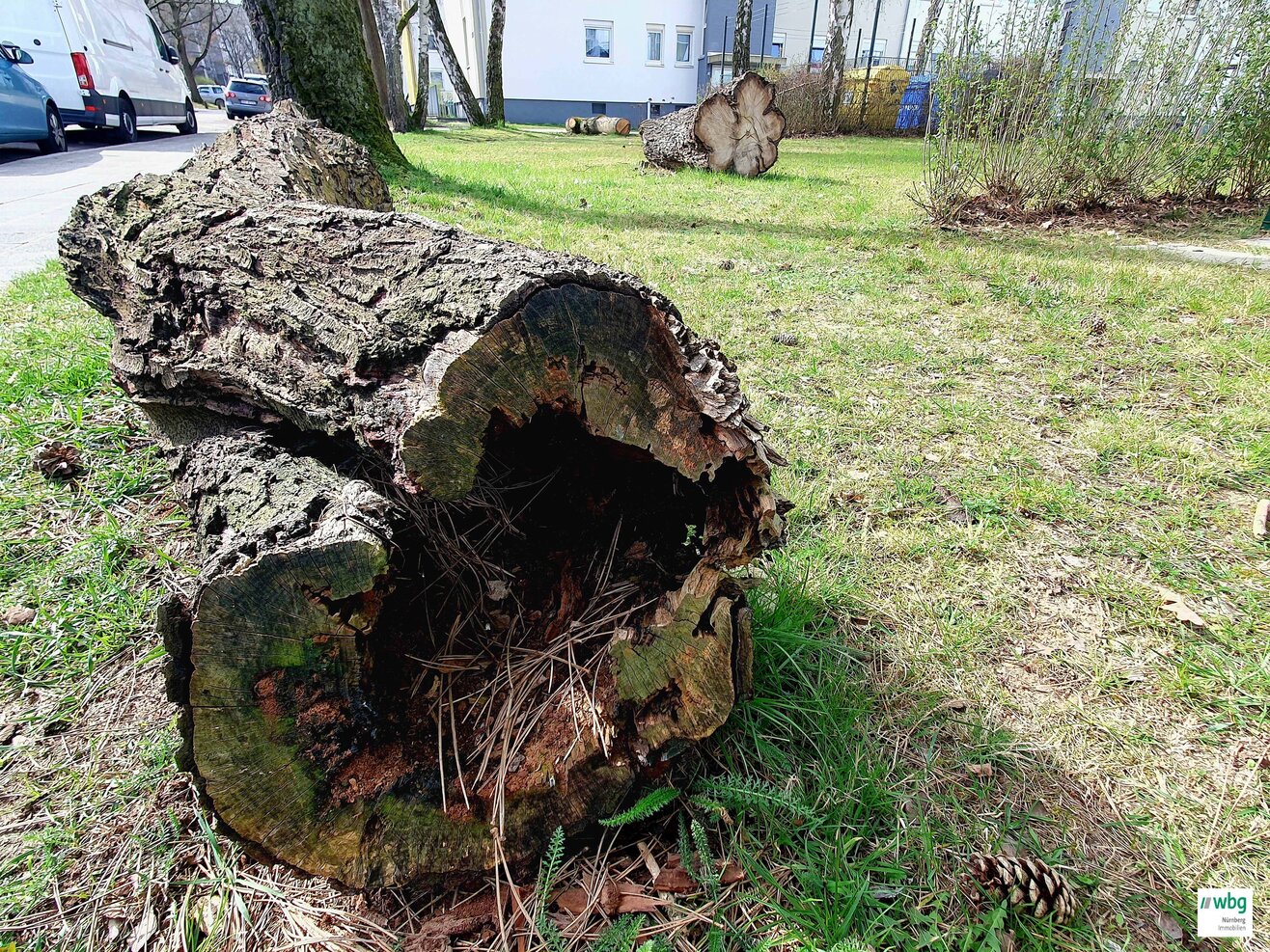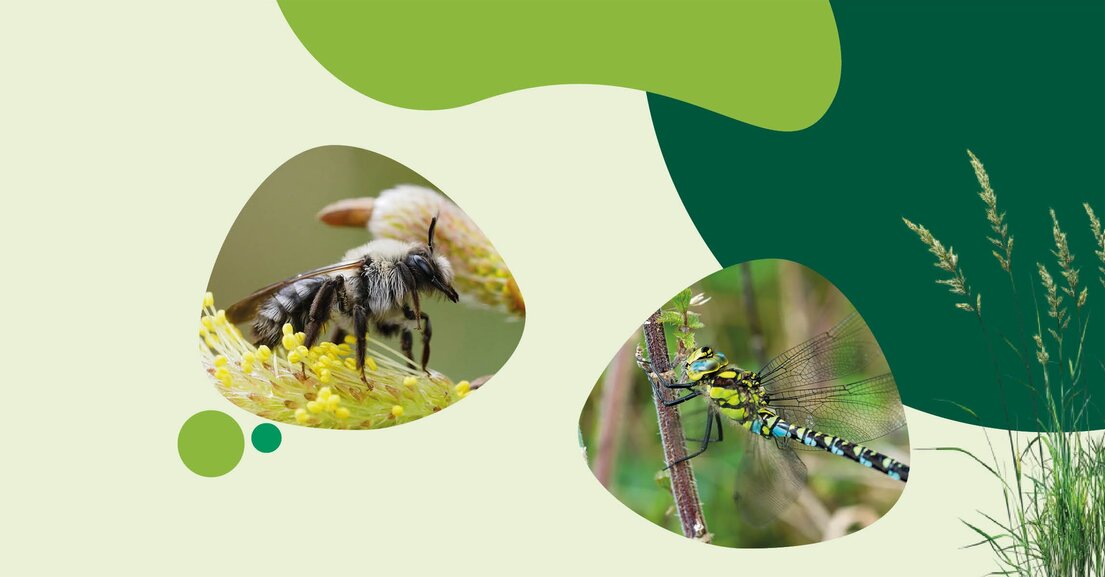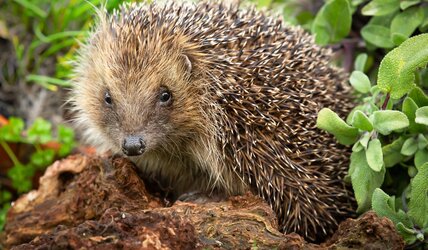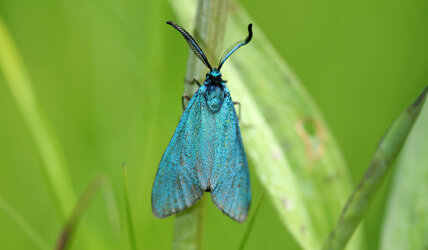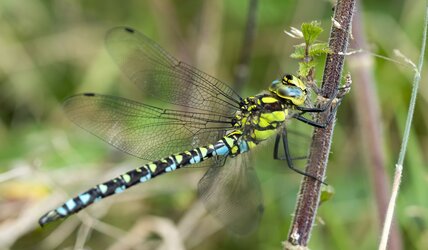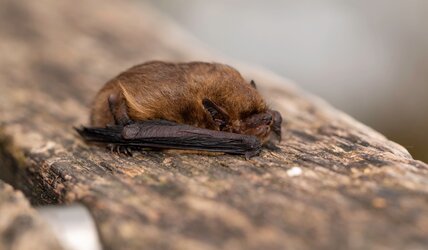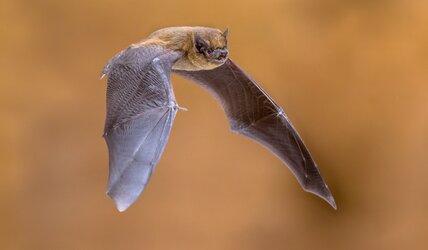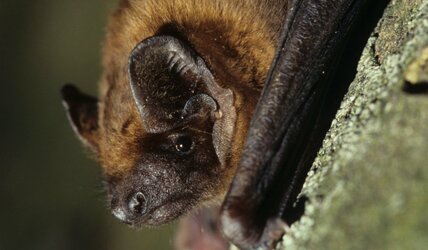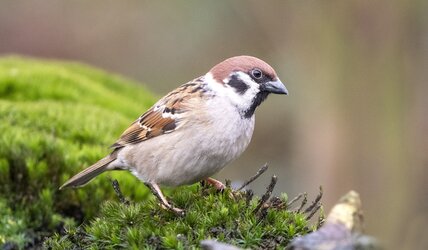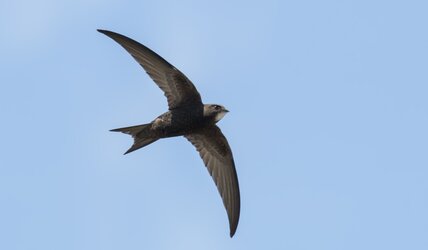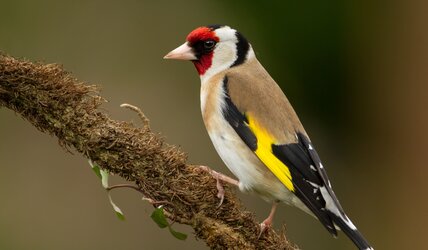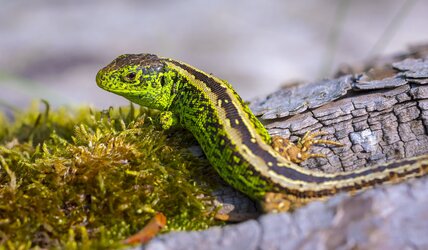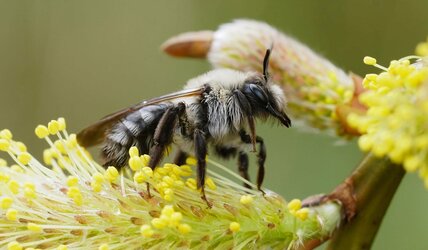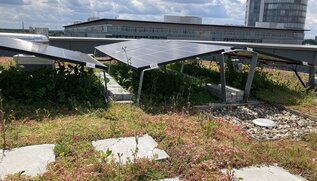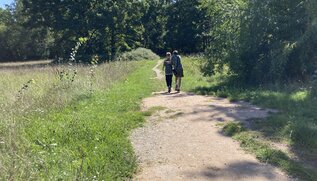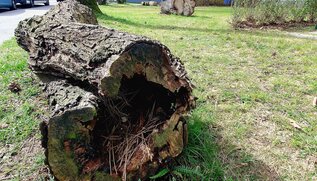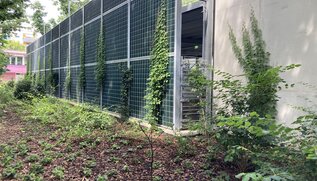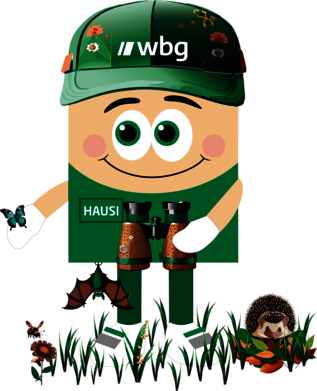
NATURNAH.WOHNEN IN THE LANGWASSER SOUTH QUARTER
With naturnah.wohnen ("living close to nature") wbg Nürnberg harmonizes the protection and promotion of wildlife with modern urban planning. Using the “Animal-Aided-Design” method, the presence of certain animals is incorporated into the planning of buildings, gardens and urban and landscape planning. The design is therefore based on the living requirements of wild animals. This planning approach can be used for both new buildings and building renovations. The maintenance of buildings and green spaces can also be designed to encourage the presence of animals.
So far, wbg Nürnberg has defined a total of eleven target animal species to be considered in the Langwasser Süd district. These include insect species, mammals, bird species and amphibians, for example. We humans also benefit greatly from the promotion of biodiversity in the city: the open spaces become more attractive and natural and offer protection from the heat in summer, for example.
naturnah.wohnen
Erfahren Sie in unserem Infoflyer, wie Sie die LebensRäume der Wildtiere schützen können.
Our target animal species
What we do
A lot has happened since wbg Nürnberg set itself the goal of implementing the “Animal-Aided Design” (AAD) project in 2021. The AAD concept was scientifically developed and applied to the entire wbg Langwasser-Süd project quarter. Above, the target species european hedgehog, green forester moth, southern hawker dragonfly, soprano pipistrelle, common pipistrelle, common noctule, eurasian tree sparrow, common swift, european goldfinch, sand lizard and grey-backed mining bee and their habitat requirements are described.
The measures that make these habitats possible include: the creation of deadwood structures, the creation of watering places, the construction of nesting opportunities for birds and bat roosts, varied planting and the use of alternative mowing methods to make the maintenance of green spaces more animal-friendly.
The wbg Nuremberg project is an impressive example of how targeted measures can achieve a harmonious coexistence between people and nature. wbg is delighted that the “animal-assisted design” not only promotes biodiversity in the Langwasser district, but also creates a lively, natural space that is a valuable habitat for all residents – whether human or wild animal.
Facade greening involves planting climbing plants or other plant species on building facades. This improves the appearance of a building and thus enhances the urban environment.
Facade greening also offers numerous ecological benefits. The plants absorb carbon dioxide and other pollutants from the air, helping to improve air quality. They also act as a natural noise barrier and help to reduce the ambient temperature by absorbing heat and generating evaporative cooling.
Green facades can also help to reduce the building's energy consumption: the plants form an additional layer of insulation that reduces solar radiation in summer and heat loss in winter. This can reduce the need for artificial air conditioning and heating.
In addition to the ecological benefits, facade greening also has a positive effect on people's well-being. The green environment has a calming and stress-reducing effect. It also provides a habitat for birds, insects and other animals, which helps to promote biodiversity in urban areas.
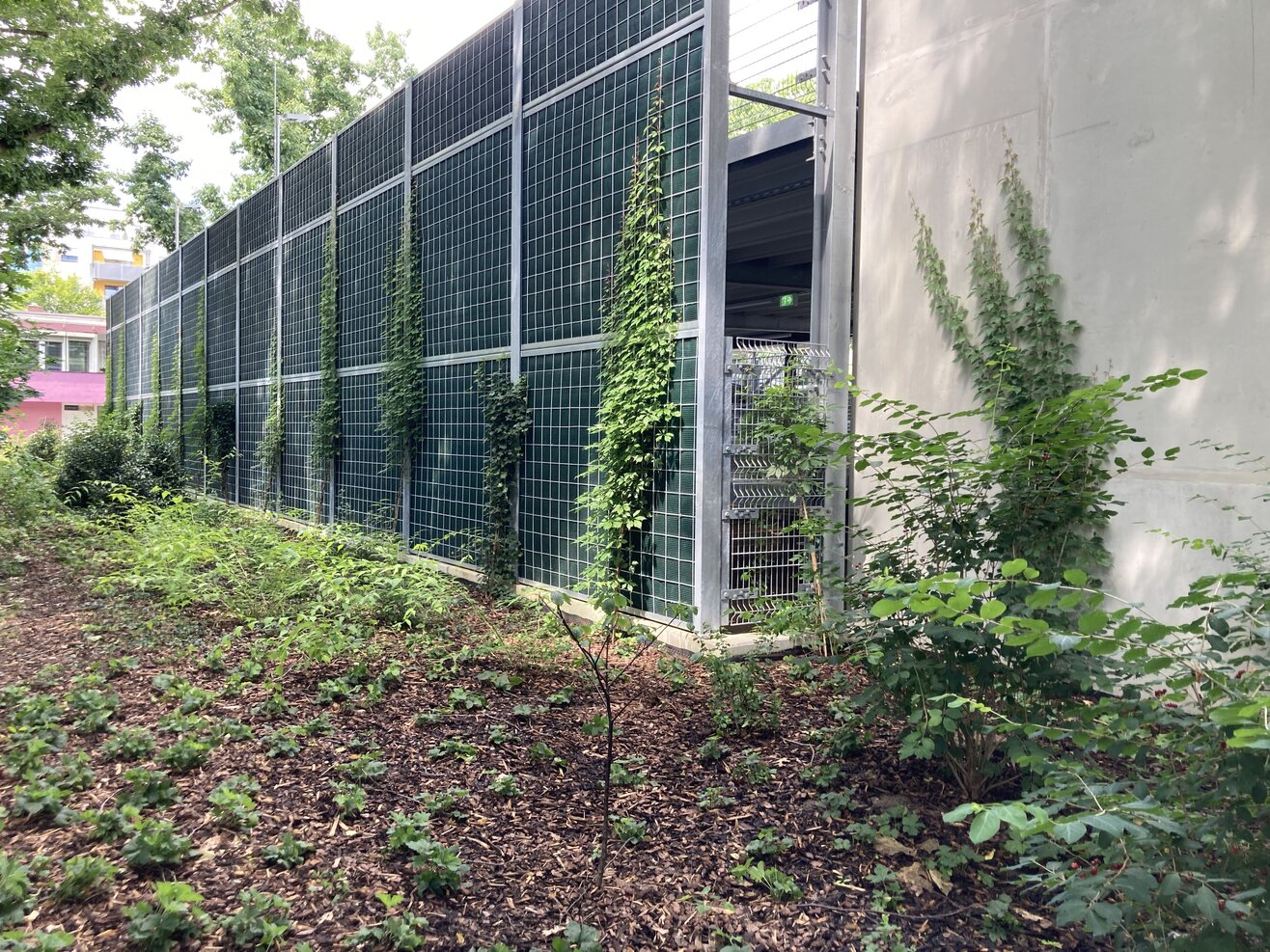
Green roofs are planted in the form of roof gardens. This creates a new habitat for plants, animals and insects. These roofs create a green retreat in urban environments where natural habitats are often scarce. They provide shelter and food for birds, butterflies and bees, for example.
Other benefits of green roofs include improving air quality: plants absorb CO₂ and release oxygen in the process. In addition, green roofs contribute to thermal insulation and thus lower the temperature in the building and the surrounding area, which reduces the urban heat island effect. They also act like a sponge by storing rainwater and thus relieving the burden on the sewage system, which can prevent flooding. In the long term, green roofs also extend the service life of the roofing material because they protect it from extreme weather conditions. In addition, green roofs enhance the aesthetics of buildings and create recreational spaces for people.
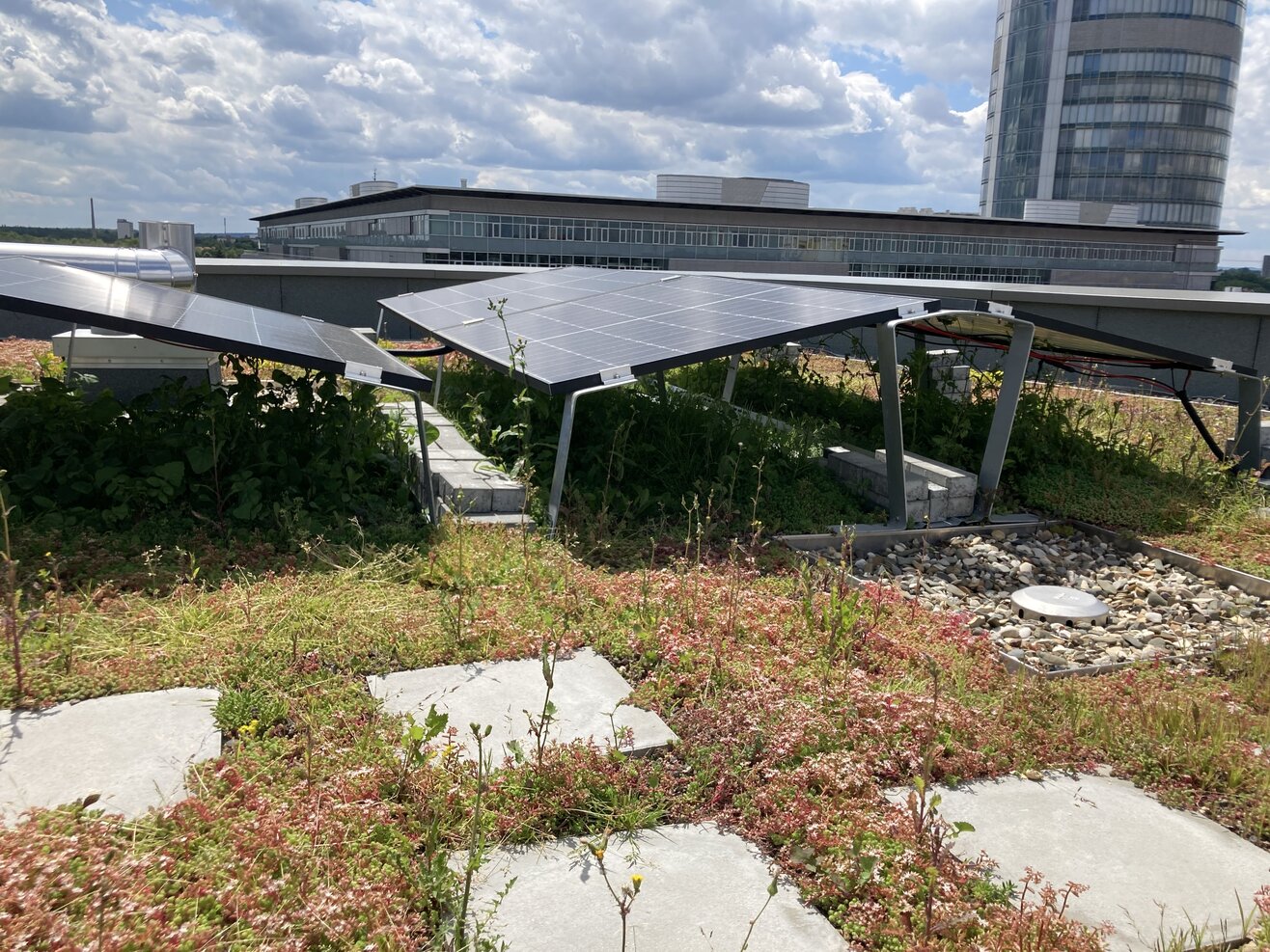
Sandy grassland
A sandy grassland is a special form of dry grassland that grows on sandy, nutrient-poor soils and is characterized by open, often sunny and dry areas.
These areas are particularly valuable ecologically as they are home to a wide variety of species. For example, various species of butterflies, grasshoppers, reptiles and rare birds live here. Seed-eating birds such as the goldfinch and the tree sparrow also find food here in the seed-rich plants.
Typical of sandy grasslands are small grasses, herbs and dwarf shrubs that are adapted to the demanding conditions, such as sand sedge, sand thyme, hawkweed and sand strawflower.
Sand grass meadows are severely threatened by intensive agriculture and urban development. Careful grazing, mowing or the removal of trees and shrubs help to preserve and restore these valuable habitats. wbg Nürnberg is actively committed to protecting these sandy grasslands in order to promote biodiversity and preserve nature.
Created sandy areas
The “SandAchse Franken” nature conservation project is committed to the preservation and promotion of sand habitats. In addition to the sandy grassland biotopes in the urban area, wbg Nürnberg is creating sand habitats in the outdoor areas to continue the sand axis.
A former sand pit is ideally suited as a habitat for remarkable sand perennial species. These plants are known for their adaptability to dry soils. During their flowering period, they not only delight our eyes, but also provide a wonderful food source for wild bees and other pollinators. Sand bees and sand lizards lay their eggs underground in sandy areas.
So let's get to work: soon an abandoned spot will become a small flowering patch, pleasing to the eye and giving our neighborhood a piece of nature and the willow sand bee a habitat.
Target species: Grey-backed Mining Bee, sand lizard
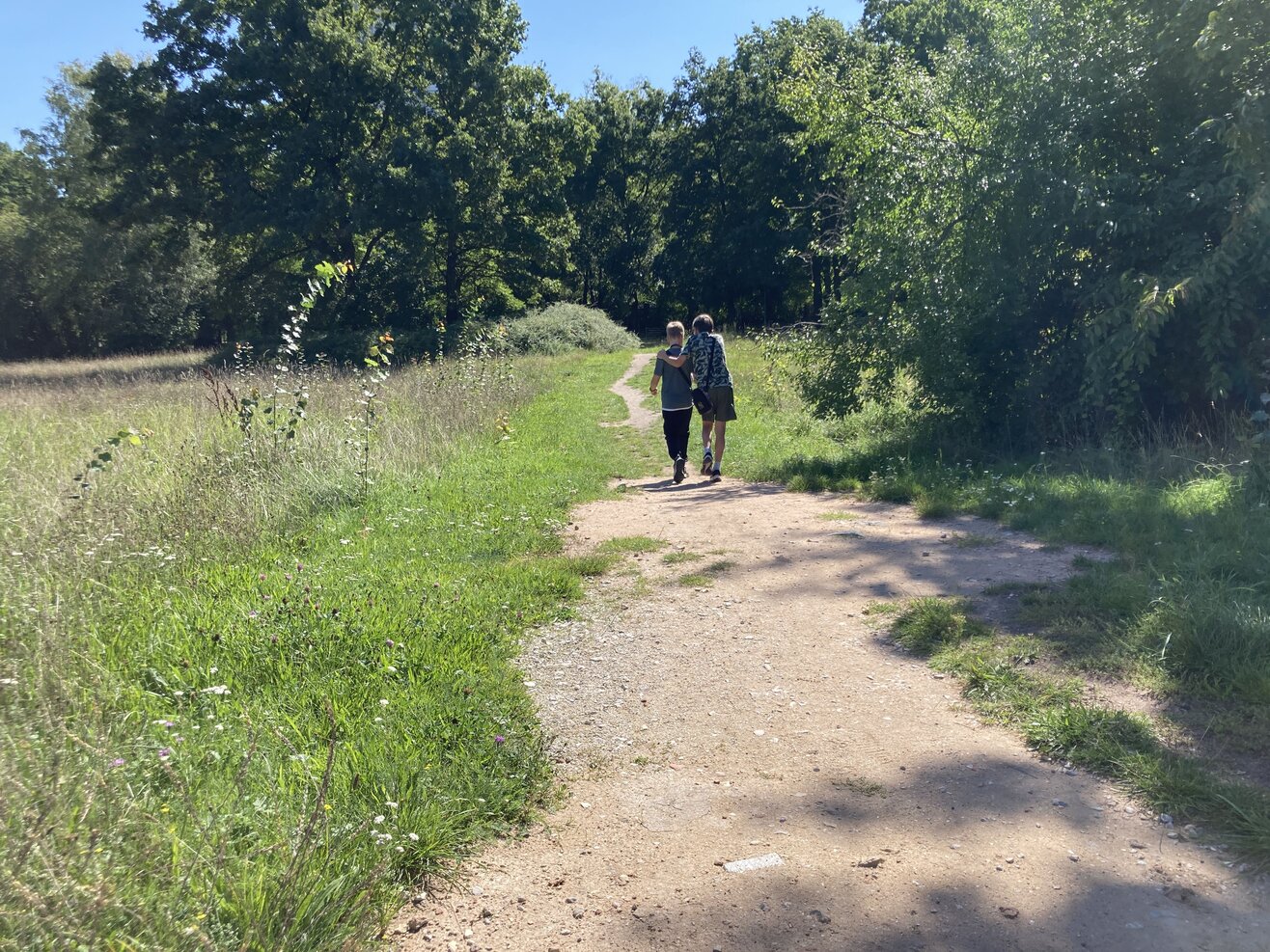
Deadwood are pieces of dead wood such as branches, trunks or tree stumps that remain in an ecosystem and thus form a valuable habitat. Although the wood no longer transports sap, pieces of dead wood play a crucial role in various larger ecosystems and fulfill several functions: Deadwood is an important habitat for a variety of organisms such as microorganisms, lichens and fungi, insects, birds, small mammals and other animals. Some species are specifically dependent on deadwood for nesting, feeding or completing their development cycle.
Deadwood also contributes to the nutrient supply of the soil by slowly decaying, forming organic material and releasing important nutrients. This process promotes the growth of plants and other organisms in the surrounding area.
As deadwood is therefore an essential component of healthy ecosystems and contributes to biodiversity, it is important for wbg to leave branches, cuttings, tree trunks and roots in the neighborhood in order to improve the nutrient cycle and thus ensure the stability of habitats.
In addition to its functional value, deadwood can also have an aesthetic value, for example by using old tree stumps as natural decoration or seating.
Visible successes:
Deadwood on wbg's green spaces is already serving to connect habitats for a variety of animal species. Shortly after the deadwood areas were created, it became clear how well the wildlife is thriving in its new environment.
